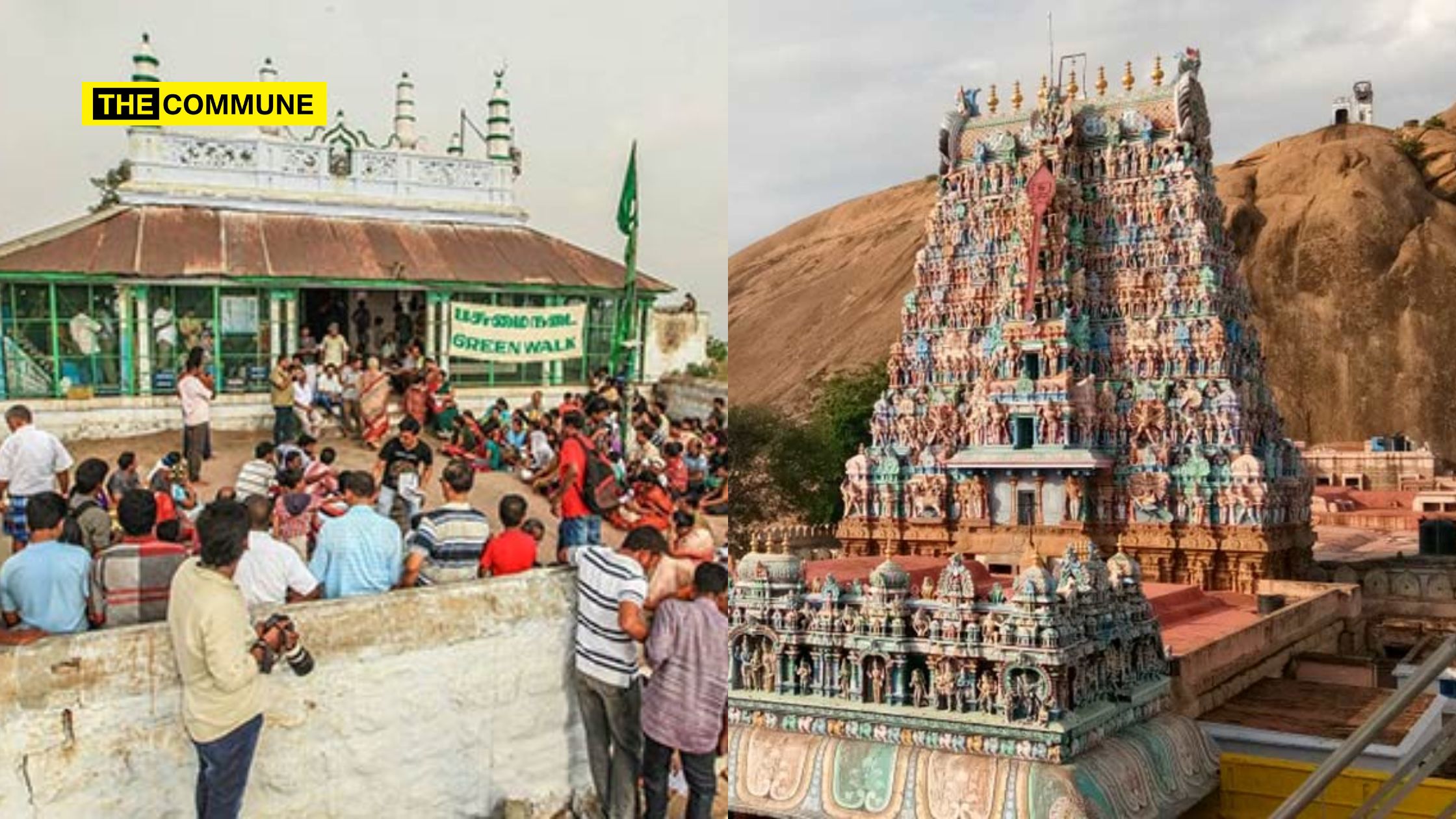
Whenever elections approach, the Dravida Munnetra Kazhagam (DMK) consistently raises the issue of reclaiming the Katchatheevu island. However, the pertinent question arises: who permitted its cession? Despite the prevailing sentiment against Indira Gandhi during the 1971 5th Lok Sabha elections, where the opposition was led by Kamaraj from Tamil Nadu and Atal Bihari Vajpayee, DMK led by M Karunanidhi chose to support the Congress instead of supporting a Tamil candidate from Tamil Nadu.
This decision could have influenced Indira Gandhi’s 1974 move to cede Katchatheevu, yet DMK failed to capitalize on this opportunity. Despite later holding key cabinet positions through coalition victories and having Tamil Nadu leaders in influential roles, DMK has consistently failed to address this issue. Nonetheless, they continue to exploit public sentiment for electoral gain, thereby deceiving the people.
Once again, the DMK’s electoral manifesto for 2024, features the same with 27th item on Agenda pledges efforts towards reclaiming Kachchatheevu to safeguard India’s security and ensure the well-being of fishermen.
Katchatheevu Island
The island of Katchatheevu was transferred from Indian administration, led by Prime Minister Indira Gandhi, under “Indo-Sri Lankan Maritime agreement” to Sri Lanka administration of Sirimavo Bandaranaike in 1974, as a gesture of bilateral goodwill. This transfer preceded the 1976 correspondence that delineated the maritime boundary line in the Sethusamudram littoral region between the two countries.
Since the commencement of the Sri Lankan civil war in 1983, Katchatheevu has become a contested zone where Indian Tamil fishermen clash with the predominantly Sinhala Sri Lankan navy. These confrontations have resulted in the loss of livelihoods, property, and even lives of Indian fishermen due to accidental breaches of the international maritime boundary line.
Colonial Era
Katchatheevu has a rich historical background, being part of the Ramnad Zamindari established in 1605 by the Nayak dynasty of Madurai. Records, such as a copper plaque from the 17th century, indicate Indian ownership of the territory, extending up to present-day Thalaimannar in Sri Lanka. During British rule, leases and agreements further solidified India’s claim to the island, excluding Sri Lanka’s possession until independence in 1947-48.
In 1921, negotiations between colonial India and Ceylon aimed to address overexploitation of marine resources and the Katchatheevu issue. The Ceylonese delegation contested India’s claim, arguing it belonged to the Zamindari of the Raja of Ramnad. Despite an informal agreement establishing a maritime boundary, the dispute lingered into the postcolonial era. Tamil Nadu continues to assert its rights to Katchatheevu, based on historical ownership claims. Although an informal maritime boundary was agreed upon in 1921, the issue remains unresolved, highlighting ongoing tensions between India and Sri Lanka over territorial disputes.
After Independence
Since 1956, discussions about dividing the international maritime boundary between India and Ceylon have brought up the ‘Katchatheevu Island Dispute’ in the Lok Sabha. However, Prime Minister Jawaharlal Nehru consistently dismissed it, considering it a matter of insufficient national importance to justify conflict with Ceylon. Nonetheless, for Ceylon, Katchatheevu remained a potential military asset, justifying its insistence on the uti possidetis juris principle to maintain colonial boundaries as postcolonial nation-state boundaries.
Katchatheevu’s strategic significance grew in February 1968 when Prime Minister Indira Gandhi ceded land in the Rann of Kutch region to Pakistan. Sensing a similar opportunity, Ceylon began asserting claims to Katchatheevu , contending that St. Antony’s Church fell within the diocese of the Roman Catholic Bishop of northern Jaffna. Despite its inconspicuousness on postcolonial maps, this raised concerns in the Indian parliament, especially when a Colombo-based newspaper published a hoax newsflash titled ‘Ceylon Government takes over Katchatheevu .’
Upon hearing Sri Lanka’s demands, officials in New Delhi were puzzled as to which island in the Gulf of Mannar Sri Lanka was referring to, and why it sought to incorporate an uninhabited atoll lacking drinking water, especially while both nations faced the larger issue of stateless Tamil refugees. Sri Lanka, however, believed Katchatheevu might hold petroleum deposits, as evidenced by recent reports of the Sri Lankan government leasing land around Delft Island and Katchatheevu to Chinese power companies.
In 1974, without considering the profound significance of Katchatheevu to the local fishing communities who depended on it for their livelihoods, Prime Minister Indira Gandhi ceded the land to Sri Lanka. This decision had far-reaching consequences, as the area later became a hotspot for terror organisation such as LTTE. The transfer of Katchatheevu also facilitated the arrest and mistreatment of Tamil and Indian fishermen who ventured into these waters for rich shrimp resources in the region.
Following the end of the Sri Lankan civil war in 2008, Tamil Nadu Chief Minister J Jayalalithaa petitioned the Supreme Court of India, arguing that the agreements of 1974 and 1976 had adversely impacted the livelihoods of Indian fishermen. Four years later, she sought to expedite the hearing on the rights of Tamil fishermen, appealing to the newly elected Prime Minister, Narendra Modi, for support in this matter. Only the central government under the leadership of Narendra Modi is vigorously addressing the issue, formulating a robust strategy to reclaim it.
However, the action taken by the DMK was their typical response of abstaining from parliamentary debates, as they commonly did.
(with inputs from Indian Express)
Subscribe to our channels on Telegram, WhatsApp, and Instagram and get the best stories of the day delivered to you personally.




